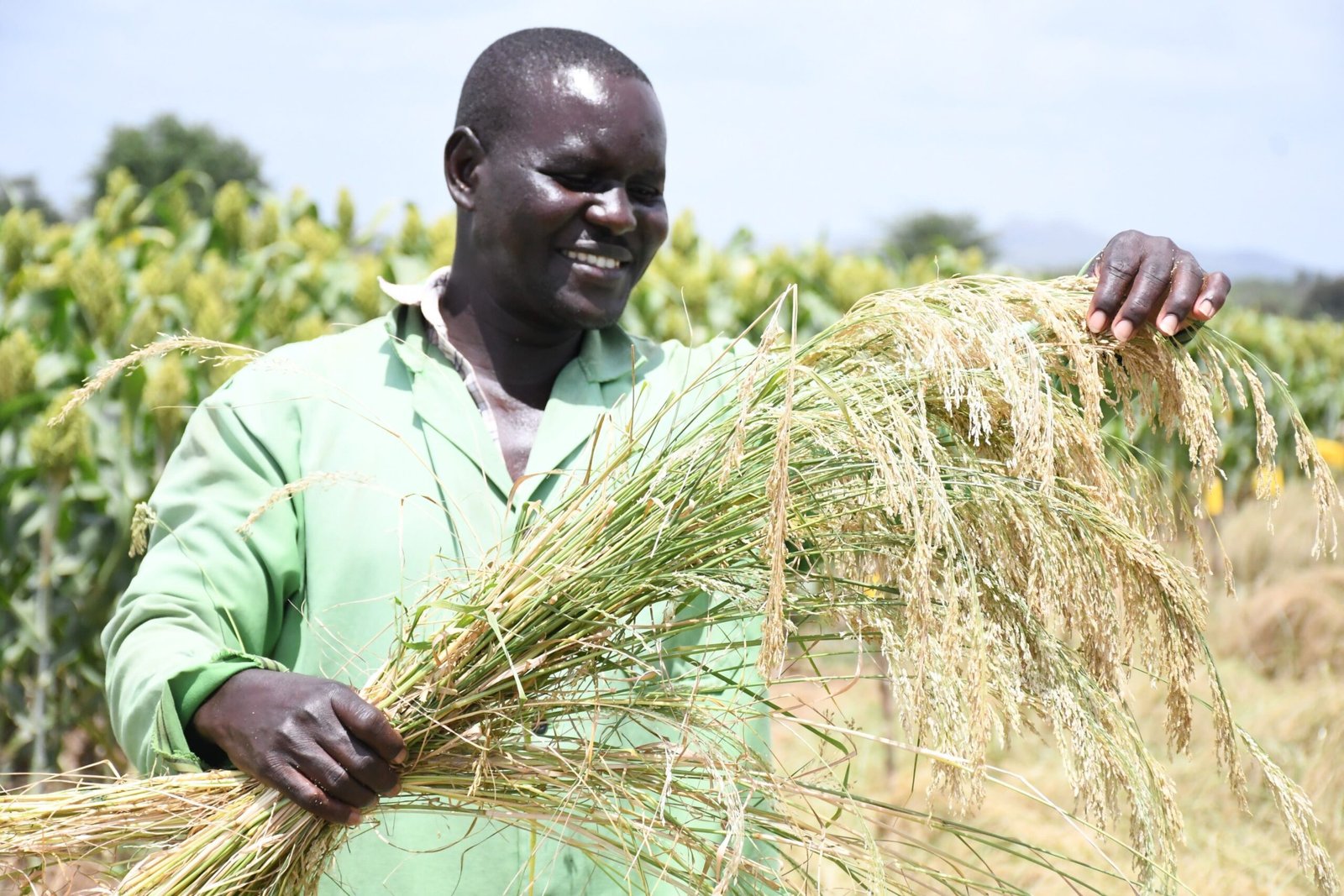Kenyan farmers to start growing Ethiopian super food crop Tef
Its flour is used to make the popular Injera, a fermented flatbread with a slightly spongy texture. According to Dr Felister Makini, the Deputy Director General, Crops at the Kenya Agricultural and Livestock Research Organization (KALRO), Teff is something of a super food.
It is rich in iron, calcium, magnesium and zinc, and is gluten-free, making it ideal for patients who suffer from the gluten protein allergies.
A crop of all seasons, it has been observed to survive adverse weather where other grains like maize and sorghum fail, show tolerance to pests and diseases, and adapt well to various cropping systems. With only 300ml of rain, the Teff crop can be ready for harvest in 60 days.
Being less prone to weevil attacks, it has a long shelf life even under traditional storage systems.
“This crop also matures in 45-60 days thus helps in building resilience among the farming communities especially in the ASALs [arid and semiarid lands],” says Dr Makini about the newest crop on KALRO’s research list.
The Kenyan research body is piloting the production of Teff in Marsabit County under the Kenya Climate Smart Agriculture Project (KCSAP) with support from the government and the World Bank. KALRO’s Katumani station has developed 10 high-yielding Teff varieties – Marsabit 1, Marsabit 2, Lusike white, KisTeff 1, AilaRed, KIM-1, KIM-2, KisTeff 2, KIB-26 and KIB27 – which are in the process of registration following validation trials in parts of northern Kenya.
The dwarf varieties among them are capable of withstanding lodging and are easy to handle.
KALRO is exploring mechanisation to reduce the costs of labour and production.
“Trials on mechanisation are currently ongoing at Katumani, Machakos and KALRO will also provide information on markets soon,” says Dr Makini, adding they are also researching on diversification of Teff food products to meet consumer tastes.
A number of extension officers, service providers and lead farmers from the county in Kenya’s arid north have been trained on the Teff value chain under the project. Dr Makini says the yield on the Kenyan trial fields are still very low at 1 ton/ha on farmers’ fields compared to the world’s average of 3 tons/ha.
This, she explains, is due to, among others, unavailability of certified seeds, use of poor agronomic practices and inadequate postharvest technologies. Rachel Kisilu, the lead research scientist and a plant breeder at KALRO, says they expect to release the varieties later this year, having taken samples to the Kenya Plant Health Inspectorate Service (KEPHIS) for further performance tests.
“This is the first time we are going to release varieties for the farming communities in Kenya and through that we are going to have a good seed system where farmers can access quality seeds of the improved varieties so that they can increase their yields,” she says.
“We are sure that by the end of this year, we will have new varieties released to farmers and with good agronomic practices and the packaging of good planting technologies the seed rate for Teff will be 4kg to 6kg per acre,” Kisilu says. While Injera, the fermented pancake, as the most popular Teff-based food, KALRO is developing a value addition manual with many more products.
“We have been able to come up with more than 20 value added food products from Teff. Starting with porridge cakes, and ugali which the communities even never thought they could get from Teff. So, we are going to publish soon a food value addition manual for Teff to help farmers and other stakeholders to come up with diverse food products from it,” Kisilu says.

